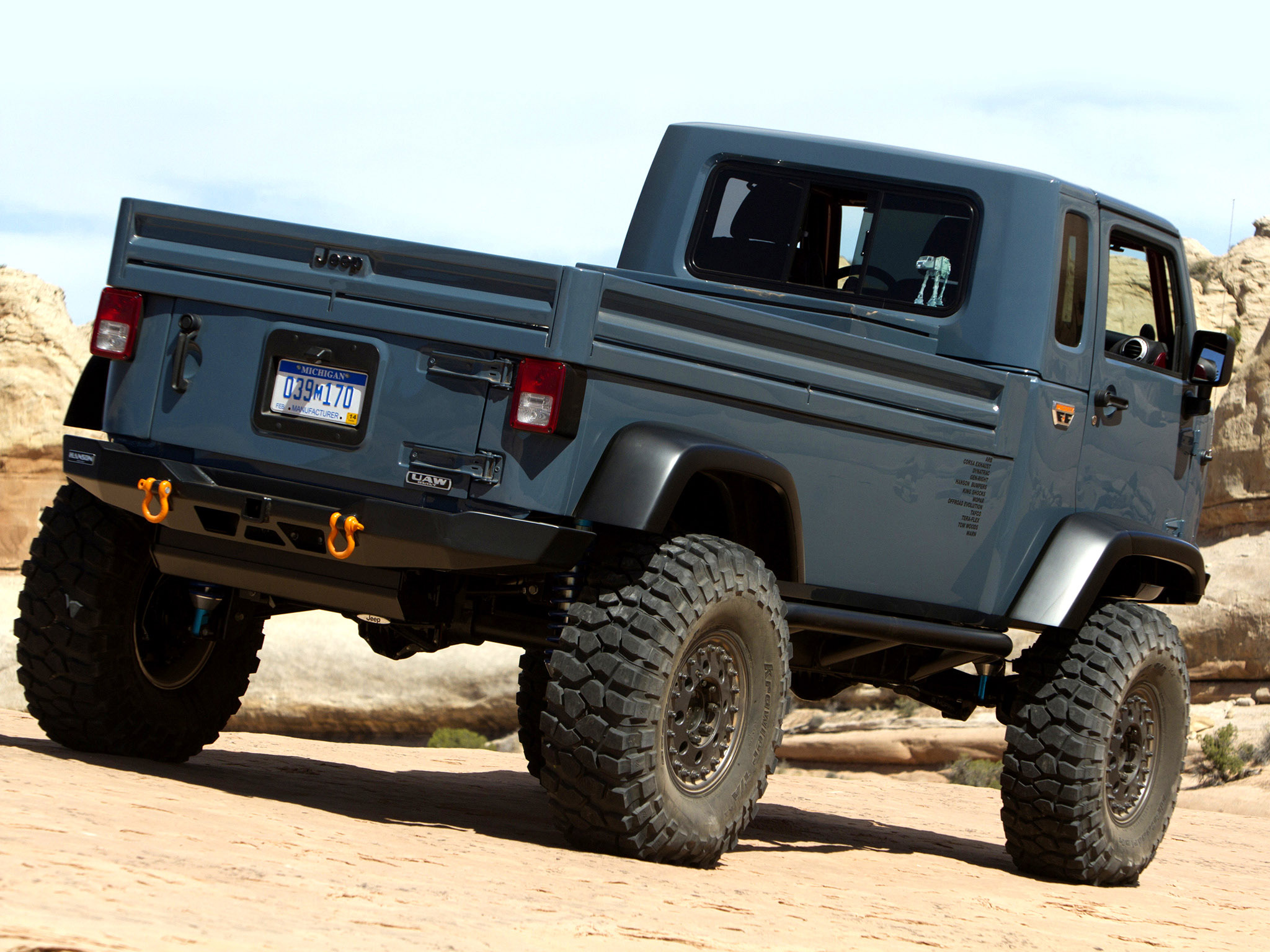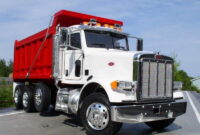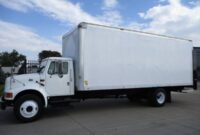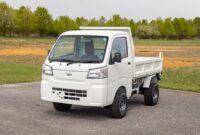4×4 Pickup Trucks: Your Ultimate Guide to Power, Versatility, and Adventure pickup.truckstrend.com
The rumble of a powerful engine, the commanding view from a raised cabin, and the sheer capability to conquer any terrain – these are the hallmarks of a 4×4 pickup truck. More than just vehicles, they are symbols of freedom, utility, and adventure, seamlessly blending the ruggedness required for demanding work with the comfort and performance desired for daily life and exhilarating escapades. Whether you’re hauling heavy loads, navigating treacherous off-road trails, or simply seeking a reliable companion for adverse weather conditions, a 4×4 pickup truck stands ready to meet the challenge. This comprehensive guide will delve into what makes these machines so indispensable, exploring their technology, benefits, considerations, maintenance, and more, helping you understand why a 4×4 pickup might just be the perfect vehicle for your needs.
What Makes a 4×4 Pickup Truck? Understanding the Core Technology
4×4 Pickup Trucks: Your Ultimate Guide to Power, Versatility, and Adventure
At the heart of every 4×4 pickup truck lies its four-wheel-drive system, a sophisticated mechanism designed to deliver power to all four wheels, either simultaneously or on demand. This crucial feature differentiates them from their two-wheel-drive counterparts, which typically send power only to the rear wheels.
The core components of a 4×4 system include:
- Transfer Case: This is the brain of the 4WD system, located between the transmission and the drive shafts. It allows the driver to select between different drive modes (2WD, 4WD High, 4WD Low) and distributes power to both the front and rear axles.
- Front and Rear Differentials: These mechanical devices allow wheels on the same axle to rotate at different speeds, which is essential for turning without tire scrub. In 4×4 systems, some trucks feature locking differentials that can force both wheels on an axle to turn at the same speed, providing maximum traction in slippery conditions.
- Drive Shafts: These connect the transfer case to the front and rear differentials, transmitting power to the wheels.
There are primarily two types of 4WD systems found in pickup trucks:

- Part-Time 4WD: This system is designed for off-road use or slippery conditions (snow, mud, sand). It typically offers 2WD High, 4WD High, and 4WD Low. When engaged in 4WD, the front and rear drive shafts are locked together, meaning they rotate at the same speed. This is excellent for traction but should not be used on dry, paved surfaces, as it can cause "driveline binding" and damage due to the wheels needing to rotate at different speeds during turns.
- Full-Time 4WD: More common in modern, higher-trim trucks, this system includes a differential within the transfer case, allowing the front and rear drive shafts to rotate at different speeds even when 4WD is engaged. This means it can be used on all surfaces, including dry pavement, without damaging the drivetrain. Many full-time systems also offer a traditional part-time 4WD mode with a locked center differential for extreme off-road conditions.
Additionally, many 4×4 trucks feature Low-Range Gearing (4L), which multiplies torque, providing maximum pulling power and control at very slow speeds, invaluable for crawling over obstacles or ascending steep inclines.

The Unrivaled Benefits of 4×4 Pickup Trucks
The capabilities of a 4×4 pickup truck extend far beyond simply having power sent to all four wheels. They offer a host of practical advantages that make them highly desirable for a diverse range of users.
- Superior Off-Road Capability: This is arguably the most recognized benefit. With power to all wheels, higher ground clearance, and often specialized off-road tires and suspension, 4×4 trucks can traverse mud, snow, sand, rocks, and steep grades that would leave 2WD vehicles stranded. They are the vehicle of choice for adventurers, hunters, campers, and anyone needing to reach remote locations.
- Exceptional Towing and Hauling: While 2WD trucks can tow, 4×4 systems provide enhanced traction and stability, especially when starting on inclines or slippery surfaces with a heavy trailer attached. The added weight and robust chassis of 4×4 models often contribute to higher towing and payload capacities.
- Confidence in Adverse Weather: Snow, ice, heavy rain, or muddy roads become less daunting in a 4×4. The ability to engage four-wheel drive provides significantly improved grip and control, enhancing safety and reducing the risk of getting stuck or losing traction.
- Versatility for Work and Play: A 4×4 pickup effortlessly transitions from a reliable workhorse on a construction site or farm to a comfortable daily driver, and then to a capable adventure vehicle for weekend trips. This multi-faceted utility makes them an excellent investment for those with varied needs.
- Higher Resale Value: Due to their enhanced capabilities and broader appeal, 4×4 pickup trucks often command a higher resale value compared to their 2WD counterparts, making them a smart long-term investment.

Choosing Your 4×4 Pickup: Key Considerations
Selecting the right 4×4 pickup truck requires careful thought, as there’s a vast array of options on the market. Consider these factors to narrow down your choices:
- Intended Use:
- Heavy Work/Towing: Look for full-size or heavy-duty trucks (F-250/350, Ram 2500/3500, Silverado/Sierra 2500/3500) with diesel engine options for maximum torque and towing capacity.
- Off-Roading/Adventure: Prioritize ground clearance, robust suspension, off-road tires, locking differentials, and available off-road packages (e.g., Ford Tremor, Ram Rebel/Power Wagon, Chevy ZR2, Toyota TRD Pro). Mid-size trucks like the Tacoma or Gladiator are often preferred for tighter trails.
- Daily Driving/Light Hauling: Full-size half-ton trucks (F-150, Ram 1500, Silverado 1500) or mid-size trucks (Tacoma, Ranger, Frontier) offer a good balance of comfort, capability, and fuel efficiency.
- Size Category:
- Mid-Size: (e.g., Toyota Tacoma, Ford Ranger, Chevy Colorado, Nissan Frontier, Jeep Gladiator) Easier to maneuver, better fuel economy, and often preferred for narrower trails.
- Full-Size (Half-Ton): (e.g., Ford F-150, Ram 1500, Chevy Silverado 1500, Toyota Tundra, Nissan Titan) The most popular segment, offering a balance of capability, comfort, and available features.
- Heavy-Duty (3/4-Ton, 1-Ton): (e.g., Ford F-250/350, Ram 2500/3500, Chevy Silverado/GMC Sierra 2500/3500) Built for maximum towing, hauling, and durability, often with diesel engine options.
- Engine Type:
- Gasoline: Typically more affordable upfront, quicker acceleration, and quieter. V6 engines offer good balance, while V8s provide more power.
- Diesel: Higher torque, better fuel economy (especially when towing), longer engine life, but higher upfront cost and maintenance.
- Cab Configuration and Bed Length:
- Regular Cab: Two doors, single row of seats. Best for work, maximum bed length.
- Extended Cab (SuperCab, Double Cab): Two full-size front doors, two smaller rear doors, jump seats in back.
- Crew Cab (SuperCrew, Quad Cab): Four full-size doors, spacious rear seating. Most popular for families.
- Bed lengths typically range from 5.5 ft to 8 ft. Longer beds offer more cargo capacity but reduce maneuverability.
- Budget: Beyond the purchase price, factor in fuel costs (4x4s typically get lower MPG than 2WDs), insurance, and maintenance.
Maintaining Your 4×4 Pickup: Tips for Longevity and Performance
Proper maintenance is crucial to ensure your 4×4 pickup remains reliable and performs optimally for years to come, especially if you frequently use its off-road capabilities.
- Follow Manufacturer’s Service Schedule: Adhere strictly to the recommended intervals for oil changes, filter replacements (air, oil, fuel, cabin), and fluid checks (coolant, brake fluid, power steering fluid).
- Check 4WD System Fluids: The transfer case and differential fluids need periodic inspection and replacement. Neglecting these can lead to costly repairs. Consult your owner’s manual for specific intervals.
- Tire Care: Maintain correct tire pressure, rotate tires regularly (every 5,000-7,500 miles), and inspect for uneven wear. If you frequently go off-road, consider specialized All-Terrain (AT) or Mud-Terrain (MT) tires and check for punctures or sidewall damage after excursions.
- Undercarriage Inspection: After off-roading, inspect the underside for damage to skid plates, suspension components, steering linkages, and exhaust pipes. Wash off excessive mud and debris, as it can trap moisture and accelerate rust.
- Brake System Check: 4×4 trucks are heavy, and often carry or tow heavy loads, putting extra strain on brakes. Have them inspected regularly and replace pads/rotors as needed.
- Rust Prevention: Especially in regions with harsh winters or coastal environments, regular washing, particularly underneath, helps prevent rust. Consider aftermarket rustproofing if your vehicle is prone to it.
Navigating Challenges and Finding Solutions
While 4×4 pickup trucks offer immense advantages, they also come with certain considerations. Being aware of these and their solutions can help you make an informed decision.
- Fuel Economy: Generally, 4×4 trucks are heavier and have more drivetrain components than 2WD models, leading to slightly lower fuel efficiency.
- Solution: Choose a truck with a smaller, more efficient engine if heavy towing isn’t a primary concern. Drive conservatively, avoid aggressive acceleration, and ensure proper tire pressure.
- Maneuverability and Parking: Their larger size, especially full-size and heavy-duty models, can make navigating tight city streets or crowded parking lots challenging.
- Solution: Utilize parking sensors, backup cameras, and 360-degree cameras. Practice makes perfect, and for urban dwellers, a mid-size truck might be a better fit.
- Higher Purchase and Maintenance Costs: 4×4 systems add complexity and weight, leading to a higher initial purchase price and potentially higher maintenance costs for specialized components.
- Solution: Budget accordingly. Consider certified pre-owned options to save on upfront costs. Adhere to maintenance schedules to prevent major issues, and seek out reputable mechanics specializing in trucks.
- Ride Quality (especially Heavy-Duty models): Unloaded heavy-duty trucks can have a stiffer ride due to their robust suspension designed for heavy loads.
- Solution: Test drive thoroughly. For daily driving, a half-ton or mid-size truck generally offers a more comfortable ride. Aftermarket suspension upgrades can also improve ride quality.
Popular 4×4 Pickup Truck Models
The market for 4×4 pickup trucks is robust, with several manufacturers offering compelling options across different segments:
- Ford F-Series (F-150, Super Duty): Consistently best-selling, known for innovation, diverse engine options (EcoBoost, V8, Power Stroke diesel), and a wide range of trims from basic work trucks to luxurious off-road beasts.
- Ram 1500/2500/3500: Praised for its coil-spring rear suspension (1500), offering a smoother ride, and its powerful HEMI V8 and Cummins diesel engines. Features luxury interiors and robust towing capabilities.
- Chevrolet Silverado/GMC Sierra (1500, 2500/3500 HD): GM’s offerings provide strong engines, comfortable cabins, and a variety of configurations. GMC models often feature more premium styling and materials.
- Toyota Tacoma/Tundra: Renowned for legendary reliability and strong resale value. The Tacoma is a mid-size off-road icon, while the Tundra is a full-size contender known for its durability.
- Nissan Titan/Frontier: Solid contenders offering good value. The Frontier is a capable mid-size option, while the Titan provides a V8-only full-size experience.
- Jeep Gladiator: Unique in its segment, offering open-air driving and unparalleled off-road prowess directly from the factory, combining Wrangler DNA with pickup utility.
Typical Price Ranges for Popular 4×4 Pickup Trucks (MSRP)
Please note that these are estimated starting Manufacturer’s Suggested Retail Price (MSRP) ranges for base 4×4 models and can vary significantly based on trim level, engine choice, optional features, region, incentives, and market conditions. Prices are subject to change by the manufacturer.
| Make & Model | Segment | Typical Starting MSRP Range (4×4) | Key Features / Notes |
|---|---|---|---|
| Mid-Size Trucks | |||
| Chevrolet Colorado | Mid-Size | $32,000 – $48,000+ | Versatile, good balance of size/capability. |
| Ford Ranger | Mid-Size | $35,000 – $45,000+ | Turbocharged engine, solid towing. |
| Jeep Gladiator | Mid-Size | $42,000 – $65,000+ | Unique open-air, extreme off-road capability. |
| Nissan Frontier | Mid-Size | $35,000 – $43,000+ | Modernized design, powerful V6. |
| Toyota Tacoma | Mid-Size | $36,000 – $50,000+ | Legendary reliability, strong off-road trims. |
| Full-Size (Half-Ton) Trucks | |||
| Chevrolet Silverado 1500 | Full-Size | $45,000 – $70,000+ | Range of engines, comfortable interior. |
| Ford F-150 | Full-Size | $48,000 – $75,000+ | America’s best-seller, vast configurability. |
| GMC Sierra 1500 | Full-Size | $48,000 – $75,000+ | Premium styling, similar to Silverado. |
| Ram 1500 | Full-Size | $47,000 – $72,000+ | Smooth ride, luxurious interiors, eTorque mild-hybrid. |
| Toyota Tundra | Full-Size | $45,000 – $68,000+ | Twin-turbo V6, strong reliability. |
| Heavy-Duty Trucks | |||
| Chevrolet Silverado 2500HD | Heavy-Duty | $50,000 – $80,000+ | Duramax diesel option, serious towing. |
| Ford F-250 Super Duty | Heavy-Duty | $52,000 – $85,000+ | Powerful gas & diesel engines, class-leading towing. |
| GMC Sierra 2500HD | Heavy-Duty | $55,000 – $85,000+ | Premium HD option, advanced tech. |
| Ram 2500 | Heavy-Duty | $55,000 – $88,000+ | Cummins diesel, robust towing, Power Wagon off-road. |
Note: These prices are estimates and do not include destination charges, taxes, registration, or dealer-added options. Actual transaction prices can vary.
Frequently Asked Questions (FAQ) about 4×4 Pickup Trucks
Q1: Is 4×4 better than AWD?
A1: It depends on your needs. 4×4 (four-wheel drive) systems are generally more robust and designed for serious off-roading, offering low-range gearing and often locking differentials. AWD (all-wheel drive) systems are typically lighter, always engaged, and designed for improved traction on slippery paved roads or light off-road trails. For heavy-duty work or extreme off-roading, 4×4 is superior. For everyday driving in varying weather conditions, AWD can be very effective.
Q2: When should I use 4H vs. 4L?
A2:
- 4H (4-High): Use for slippery conditions like snow, ice, gravel roads, or light off-road trails where you can maintain a moderate speed. Do NOT use on dry pavement with part-time 4WD.
- 4L (4-Low): Use for maximum torque and control at very slow speeds. Ideal for climbing steep hills, crawling over rocks, deep mud, or pulling heavy loads out of difficult situations. You typically need to be stopped and in neutral to engage 4L.
Q3: Do 4×4 trucks get worse gas mileage than 2WD trucks?
A3: Generally, yes. 4×4 systems add weight and complexity to the drivetrain, which can slightly decrease fuel efficiency compared to their 2WD counterparts. However, advancements in engine technology and lighter materials are continually narrowing this gap.
Q4: Are 4×4 trucks more expensive to maintain?
A4: Potentially, yes. They have more components (transfer case, front differential, additional drive shaft) that require periodic fluid changes and inspection. If you frequently go off-roading, you might also need to replace tires, suspension components, or repair undercarriage damage more often.
Q5: What’s the difference between part-time and full-time 4WD?
A5:
- Part-Time 4WD: The front and rear drive shafts are locked together when 4WD is engaged. This means all wheels turn at the same speed. It’s excellent for traction on loose surfaces but must NOT be used on dry, paved roads as it can cause drivetrain damage.
- Full-Time 4WD: Features a center differential in the transfer case, allowing the front and rear drive shafts to rotate at different speeds. This enables it to be used safely on all surfaces, including dry pavement. Many full-time systems also offer a selectable "locked" mode for true part-time 4WD capability when needed.
Conclusion
4×4 pickup trucks are much more than mere modes of transport; they are versatile tools engineered to tackle diverse challenges, from the demanding rigors of a worksite to the untamed paths of the wilderness. Their robust construction, advanced four-wheel-drive systems, and sheer capability offer unparalleled advantages in towing, hauling, off-road performance, and adverse weather conditions. While they may come with considerations like fuel economy and initial cost, their benefits in terms of utility, safety, and long-term value often outweigh these factors.
Whether you’re a tradesperson needing a reliable work partner, an outdoor enthusiast seeking adventure, or a family looking for a safe and capable vehicle, understanding the nuances of 4×4 pickup trucks empowers you to make an informed decision. With the right choice, your 4×4 pickup will not just be a vehicle, but a steadfast companion ready to conquer whatever lies ahead, embodying power, versatility, and the spirit of true freedom.



